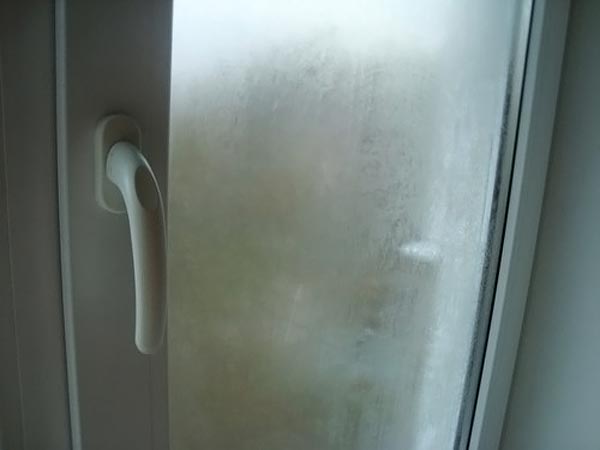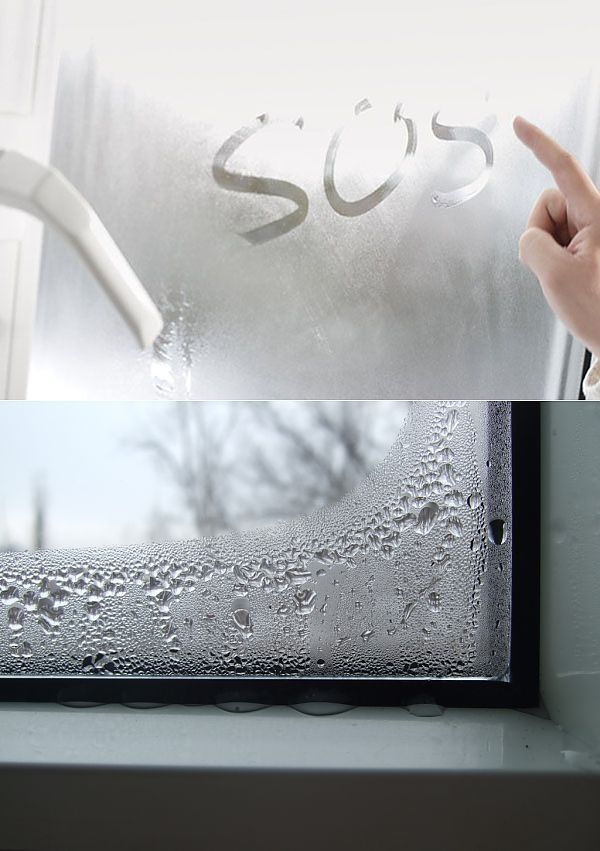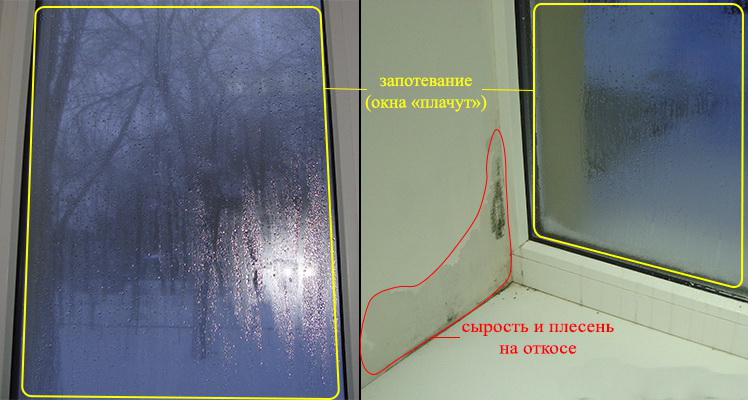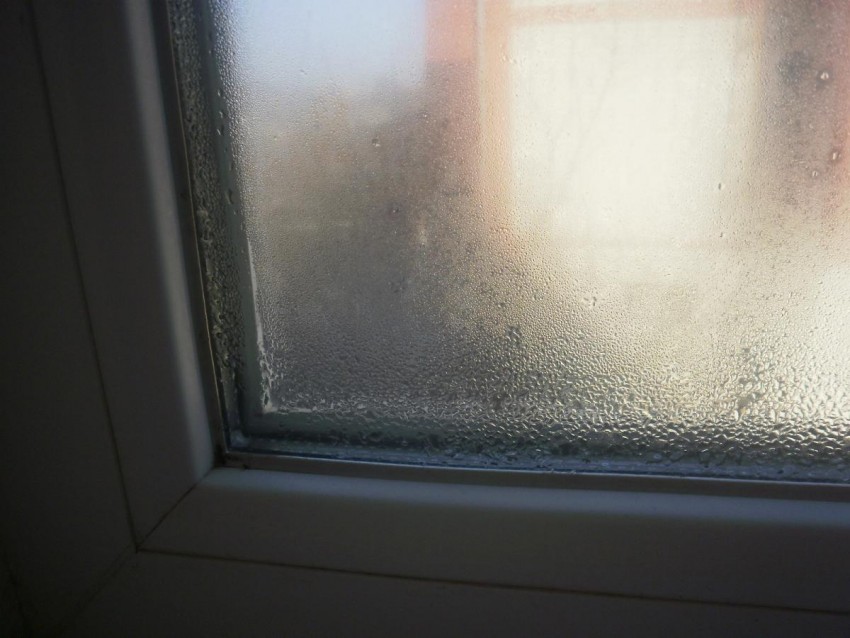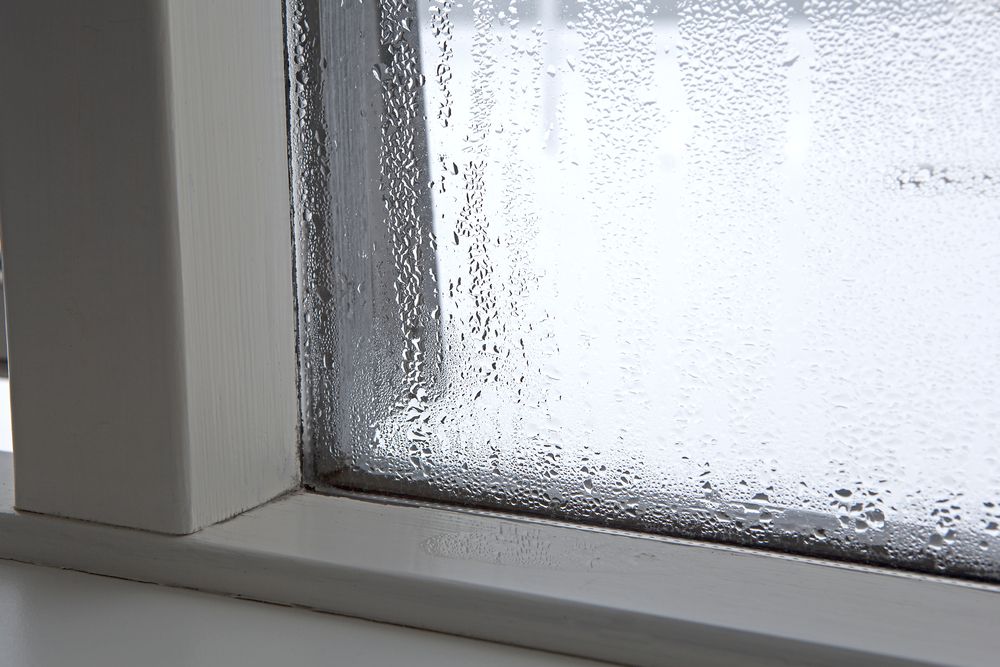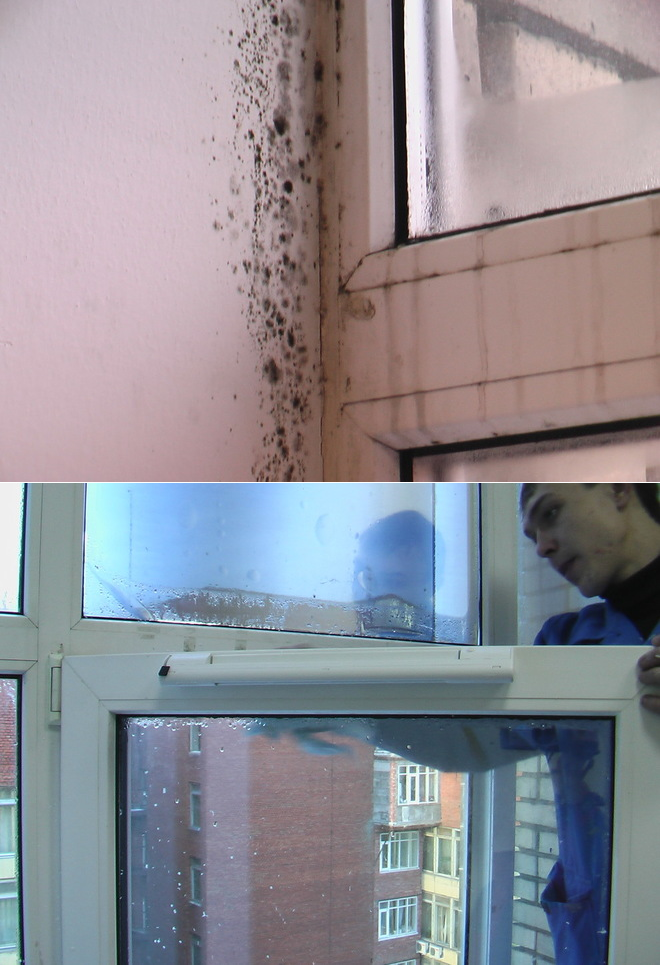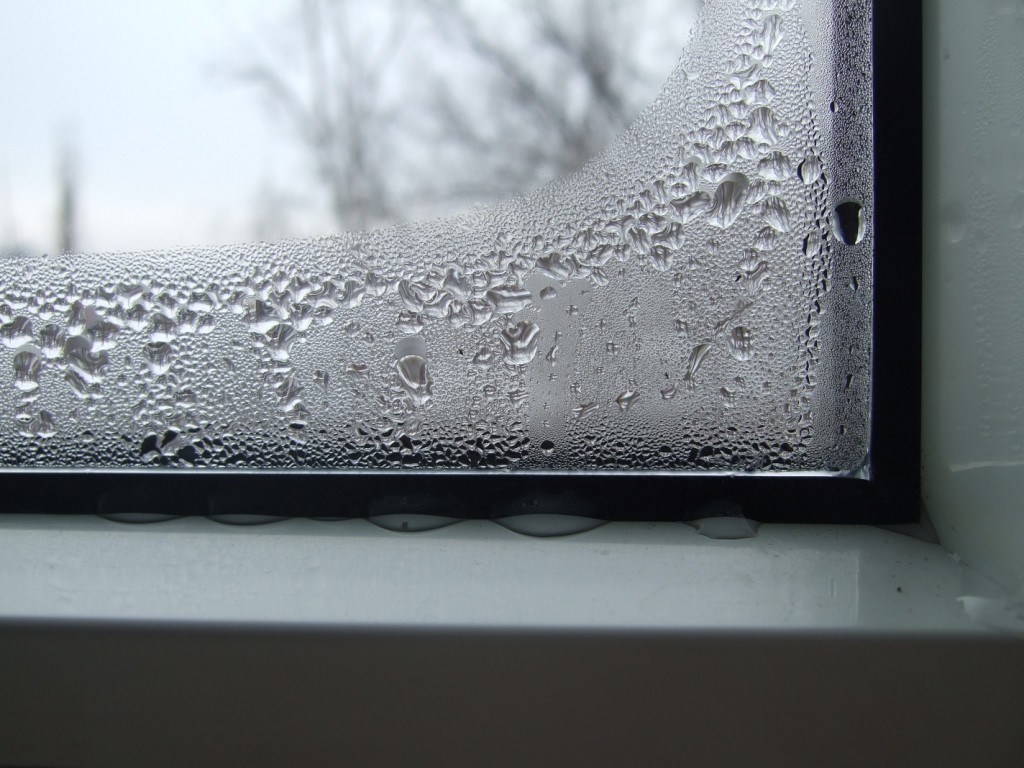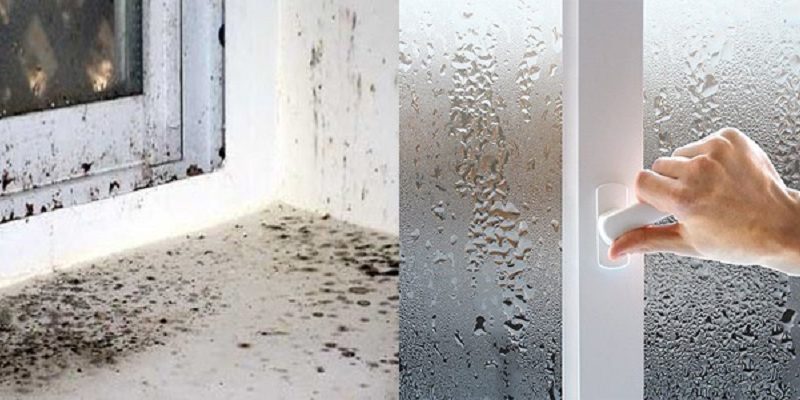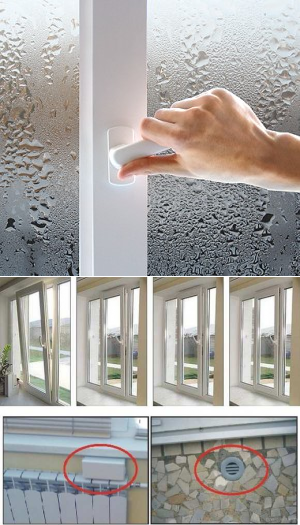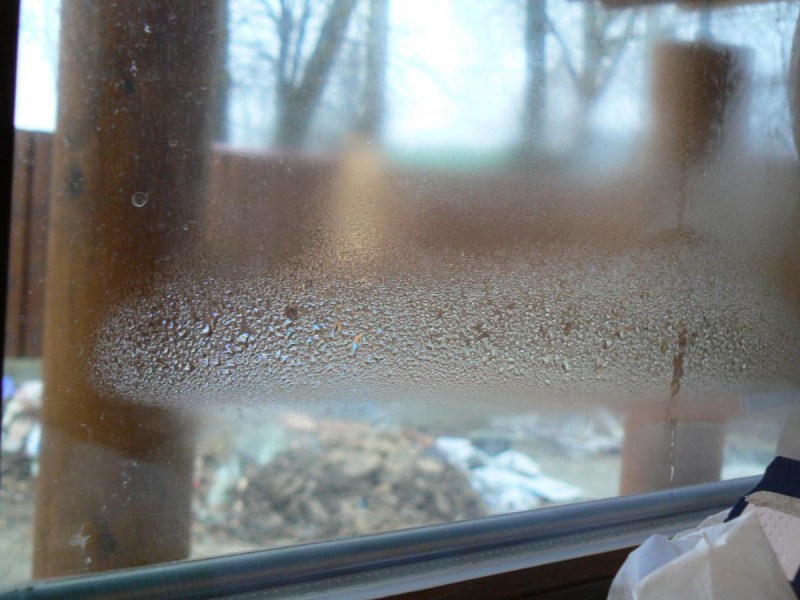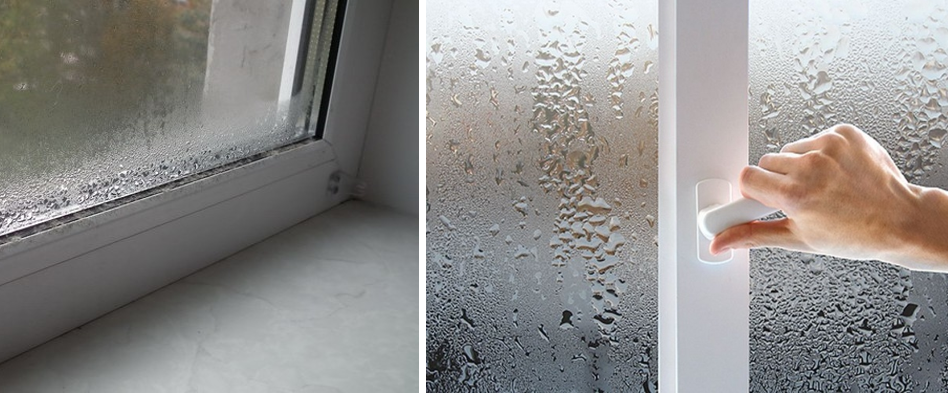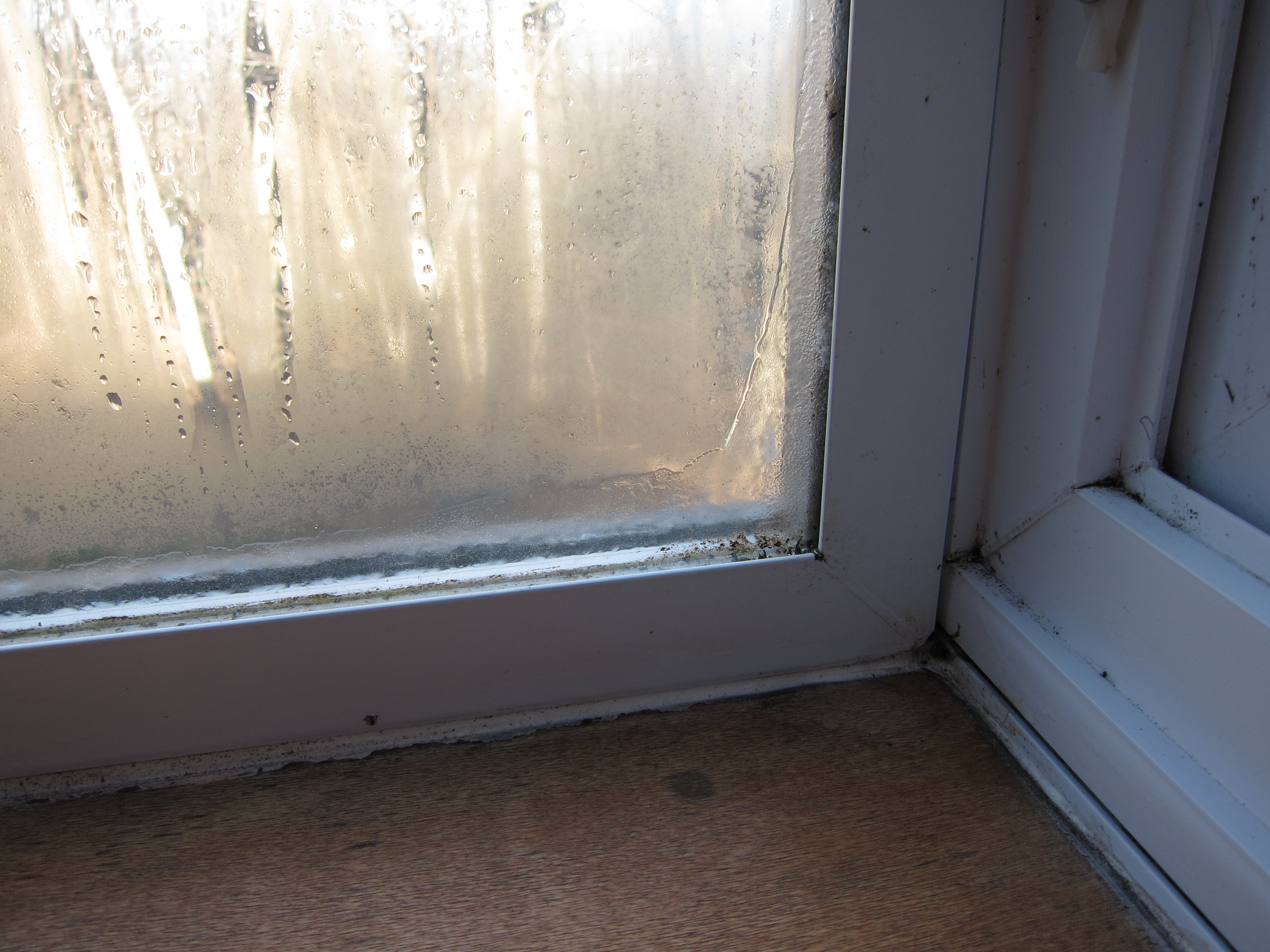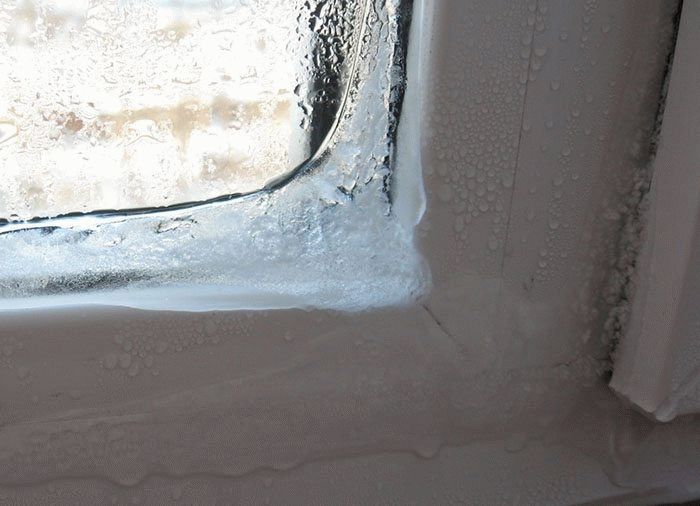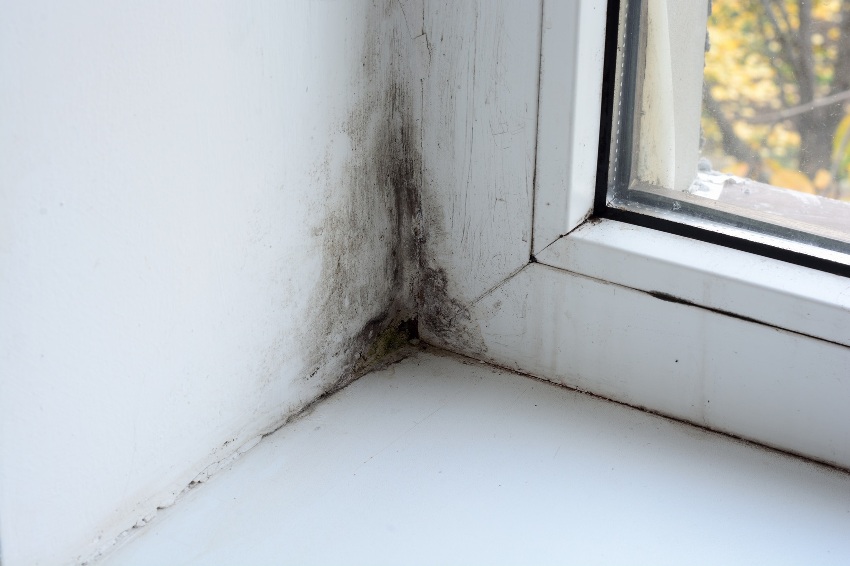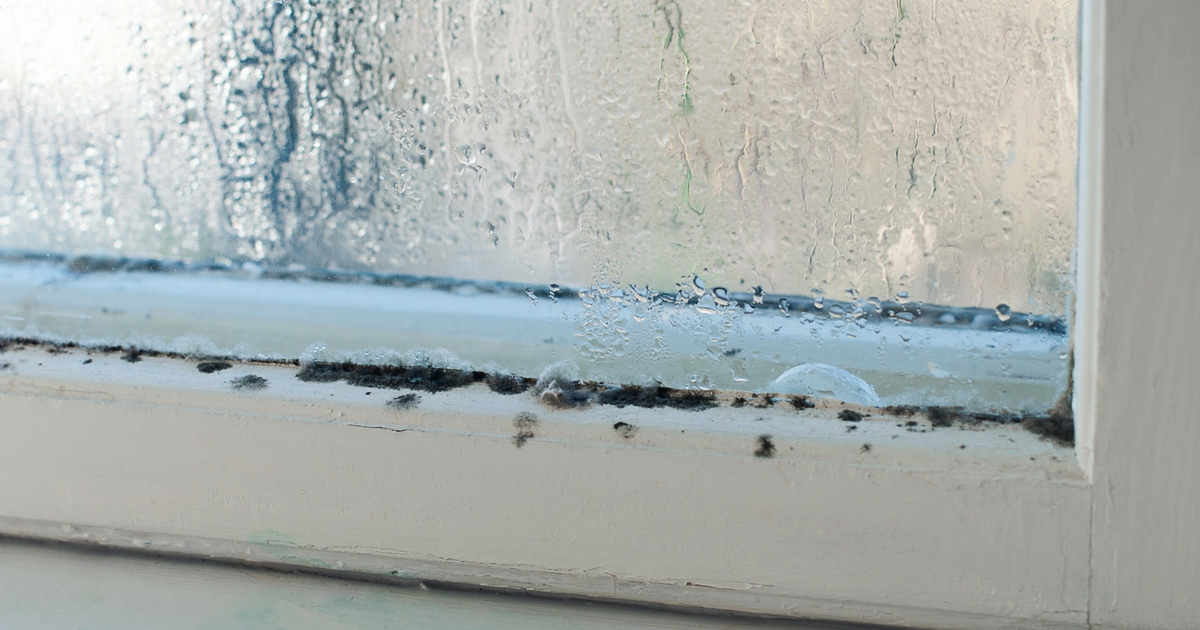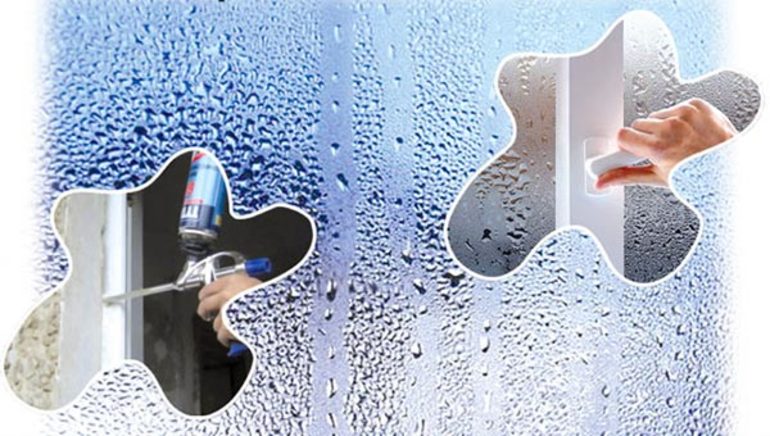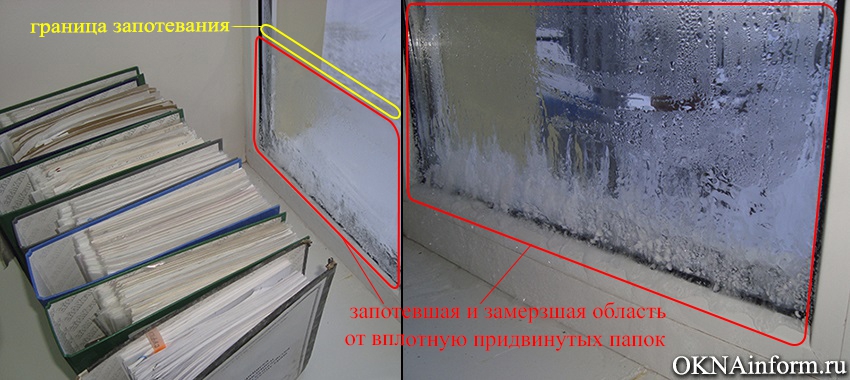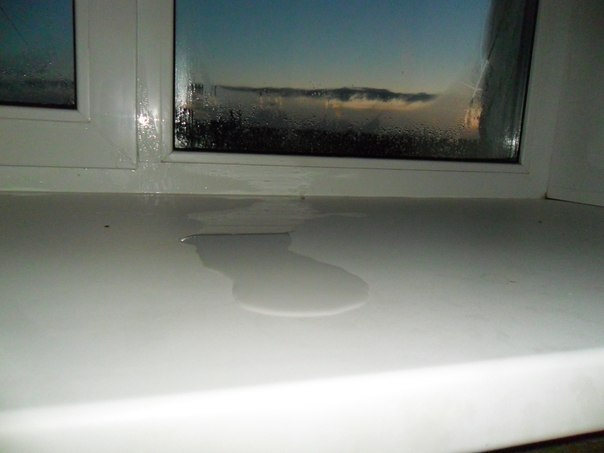Window valves
Window inlet valves have several varieties, but their principle of operation is approximately the same and consists in the metered supply of fresh air into the room through the holes made in the window. The inflow occurs when the flaps are completely closed. At the same time, such important characteristics of a plastic window as heat and noise insulation are practically not reduced.
Usually, window valves are installed openly on the top of the sash (overhead) or hidden in the frame rebate behind the sash (recessed). Some models can also be installed on the blind half of the window.
Built-in window supply valves have a low capacity (about 5 m3 / h) and are essentially window self-ventilation devices. They are designed to reduce the risk of condensation on the windows and only partially perform the function of general ventilation of the room, but in some cases they are enough to normalize the microclimate, if, for example, there are few residents in the apartment and there are no active sources of moisture (flowers, aquarium, animals, dampness from the basement, etc.).
Also, window valves can be conditionally divided into two groups according to the degree of changes made to the window structure:
- Valves installed without milling (these are all built-in and some models of overhead), which can subsequently be painlessly dismantled without marks on the window, with the exception of a few small fastening holes. Such devices can be easily installed by yourself in a few minutes.
- Valves installed with milling (only surface mounted), which are more difficult to install and make irreversible changes in the window profile - long through slots.
Valves installed with window milling have a higher capacity (up to 50 m3 / h) compared to valves of the first group (built-in 5 m3 / h and overhead valves up to 20 m3 / h). Such window valves are comparable in air permeability to wall air inlets and are only slightly inferior to them in terms of sound insulation.
In apartments with high humidity, it makes sense to install air supply devices capable of providing a constant air exchange of at least 30 m3 / h. Either milled window valves or wall valves can provide such inflow. It is these devices that will be able to relieve you of condensation and create a comfortable microclimate in the apartment.
A natural question will be how the supply valves will behave in conditions of 30-degree frost and below? Practice shows that at such temperatures, both wall and window valves work properly, unless, of course, the rules for their installation are violated and the heating system works effectively. It is quite normal for a strip of frost to appear on their surface in the area of the outlet openings. This does not interfere with the operation of the valves and does not lead to their breakage. Frost completely disappears when it “warms” outside to minus 20-25 ° C. Freezing does not occur because dry air enters the room from the valve. The jet of this air does not allow humid domestic air to come into contact with the cold surface of the valve (repels it), therefore, condensation does not fall out and crystallize inside the valve. But one has only to close the exhaust hole in the kitchen and in the bathroom, as the flow of dry air from the street will stop, the valve will become open for access to the warm humid air of the room, it will get wet and covered with ice.
Causes of moisture on windows
Let's figure out why plastic windows sweat, and what methods of elimination exist for this.
Single-glazed windows are more prone to condensation, so there is a simple solution to deal with it - buy double-glazed windows.
A sill that is too wide, protruding significantly to the side of the window, is a very common reason for the formation of moisture on the windows. If the battery is located under the window, and this is too common, then the wide window sill blocks the access of warm air to it and its heating is significantly reduced. There can be several ways out of this situation. First, a decrease in the width of the window sill. Secondly, the withdrawal of the battery outside of it or the installation of an alternative window heating system.
Another reason for condensation on the windows is the increased humidity in the room. The main reason for this is poor ventilation in the apartment as a result of its litter or its absence at all. What if the windows are sweating in this case? Eliminate the cause by cleaning the ventilation inlets.
A fairly common reason for the formation of moisture can be the presence of plants on the windowsill that release oxygen abundantly. The solution is simple - remove them from the windowsill.
If the windows are not switched to winter mode, then this can definitely cause fogging.
Therefore, it is important not to forget to switch modes, since in the summer version, the thermal insulation of the window is somewhat less, therefore, at low temperatures outside, the inner side of the window is cooled more and there is a greater temperature difference between it and the room. As a result, condensation occurs on the window.
A good prevention of this problem can be the daily ventilation of the room.
Even 10 minutes is enough to cope with fogging.
Incorrect installation of a plastic window. If you do not know why the windows are sweating, even after trying all of the above troubleshooting methods, then perhaps this is due to improper installation of the window or slopes. In this case, blowing occurs, which cools the inside of the window more than it should be, and as a result, due to the greater temperature difference, condensation appears on the window.
Moisture on double-glazed windows can occur due to the fact that they touch the too cold part of the wall and therefore cool more than it should be. In this case, it is almost impossible to change something, since this is due to the construction of the house itself.
In the photo, fogging of windows
Organization of air flow
As already mentioned, the dry (in winter) air continuously coming from the street, mixing with the humid indoor air, leads to a decrease in the relative humidity in the room to a normal level. There is no need to be afraid that having “depressurized” the apartment in winter, we will cool it down and freeze. The fact is that when designing residential buildings, a power reserve sufficient for heating the ventilation air entering through the cracks of ordinary wooden windows is initially laid in the heating system. The artificial air flow, which we are going to organize, will take place in a much smaller volume than that which was with the old "leaky" windows, therefore, the apartment can be cooled only in case of weak heating. For example, if by replacing wooden windows with plastic ones you managed to raise the air temperature in the apartment by 5-6 degrees, then after organizing normally functioning ventilation you will lose 1-2 degrees, i.e. the temperature will still remain comfortable, plus you will provide yourself with a sufficient amount of fresh air around the clock and get rid of high humidity. Thus, if with the old windows in the apartment it was at least +20 ° C, then you have no cause for concern.But if the temperature has not previously risen above 15-17 ° C, then to achieve comfort you will have to use additional heat sources, and not rely only on plastic windows - they will not warm you.
And one more thing: please get rid of the belief that "good windows are airtight windows" from your mind. This is a delusion instilled in us by thoughtless advertising of plastic windows, the fruits of which we are now reaping. By the way, Germany, the birthplace of modern plastic windows, experienced similar problems in the 90s. And the Germans managed to get out of this "crisis" without "rediscovering America" - by ventilating the premises. Now both in Germany and in other European countries it is generally forbidden to install plastic windows in residential premises without air inlets.
So how can we organize the flow of fresh air into the apartment?
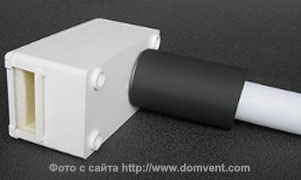 |
Rice. 2. Wall inlet valves from various manufacturers.
2 Other ways to deal with condensation
Additional steps to help keep condensation on glass to a minimum:
-
1.
Remove all indoor plants from windowsills as they evaporate moisture.
-
2.
Ventilate the room regularly. In spring, summer and autumn, windows can be ventilated almost daily, except in damp and cold weather. But in winter, such ventilation will inevitably lead to heat loss. Therefore, in the cold season, it is better to ventilate the room for a short time (2-3 minutes), but intensively (with the door wide open). So clean and dry air will instantly refresh the room without having time to cool the walls.
-
3.
Set the winter mode. At the end of the metal-plastic windows there are special regulators that can be used to set the summer or winter mode of closing the window using a hex key. In winter mode, the door will close more tightly.
-
4.
Use electric heaters or dehumidifiers. This method will entail additional energy costs, but compensate for the lack of heat in the room.
-
5.
Do not completely close the blinds that prevent the glass from heating.

Winter and summer window closing mode
It is better to start solving the problem of fogging windows by measuring humidity, since if it is constantly high, then this indicates poor ventilation, which has to be corrected.
If everything is in order with it, then only two factors remain: insufficiently warm air inside, associated with weak heating and heat loss, or poor-quality products or improper installation of double-glazed windows. The lack of heat is solved by installing additional batteries or using electric heaters, and heat loss can be dealt with by insulating window slopes and replacing worn out gaskets or fittings. If all else fails, then, most likely, the reason is the marriage of the double-glazed unit or its poor-quality installation. In this case, it remains only to apply with claims to the company where the double-glazed window was ordered.
What affects the thermal conductivity of windows?
In addition to the fact that moisture in the room can be formed in such natural ways, poor heat conductivity of the materials used in the installation of double-glazed windows can also lead to its excessive appearance. This may be the answer to the question: why do plastic windows fog up in a private house?
Every person who lives in a house during the winter period wants to feel warmth and the right temperature for comfortable well-being. Heat can escape from the room in the following ways:
- Through the floor - 13%.
- Through walls - 32%.
- Through the roof - 12%.
- Through windows - 43%.
Half of all heat loss occurs through the glass unit and slopes, and the rest is released by infrared radiation through the glass surface, which must be prevented.
Today, most of the enterprises that specialize in the production of plastic windows, most often produce windows with three-chamber or two-chamber double-glazed windows.This allows you to reduce the heat transfer that occurs through the glass. Most often there is air between the double-glazed windows, but special gases are injected into some windows, which further reduce heat transfer. This of course increases the cost of the window unit.
Therefore, you should not save on double-glazed windows and do not buy single-chamber units, since they are not heat-saving enough. It is also very important for the window to blow it with warm air currents, which are created with the help of heating batteries. A too long window sill can block the unhindered rise of warm air upward and its passage through the window blocks with its area.
The reason why the plastic windows in the house sweat may lie in the presence of ordinary indoor flowers on the windowsill. Due to the synthesis that takes place inside the flower, moisture increases, and it can already settle on the surface of the glass in the form of condensation.
Airing the room helps to remove excess moisture circulation that occurs in the air. Installation or poor quality installation can also lead to severe heat loss that occurs through the windows. This can cause blowing, which converts the warm indoor air into cold air, which in turn causes the windows to sweat.
Why do plastic windows sweat from the inside: poor-quality window
One of the main reasons for fogging windows is the window itself.
First of all, you need to pay attention to the fittings - the mechanism for opening and closing the sash of a plastic window. If the fittings are faulty, the sashes may not press tightly against the transom, and the window is depressurized.
In addition to faulty fittings, faulty double-glazed fasteners - glazing beads that cannot tightly press the double-glazed window to the profile - can also lead to fogging of the window. This is another reason for the depressurization of the window.
Unadjusted window sashes. The window profile narrows or expands with changes in temperature. Therefore, it is necessary to adjust the sashes of plastic windows. An unadjusted sash will not fit tightly to the profile, which will facilitate the passage of cold air into the apartment, giving abundant condensation when heated.
Worn rubber seal. The rubber seal is located around the perimeter of the plastic window sash. The seal ensures the tightness and tightness of the sash. A worn-out seal becomes hard and loses its elasticity and does not seal the window well.
Anti-fogging
First of all, you need to establish what exactly is causing the problem. The easiest way is with ventilation - just bring a lighter or candle to the ventilation hole and see if the flame deflects. If it is immovable, then cleaning is necessary. In most cases, it is sufficient to remove the fence grate and thoroughly wash it to remove accumulated dust and grease. If a blockage has formed inside the channel itself, it is necessary to clean it. In the most difficult cases, the matter will not do without a call to the service company.
If the problem lies in the window sill, then it is cut off if possible. If this is not possible, then all that remains is to rearrange the radiator. A plumber can help to cope with this, most often the procedure takes less than a day.
 It is necessary to choose the right size of the window sill or make it ventilation
It is necessary to choose the right size of the window sill or make it ventilation
To find out if the slopes are the problem, you need to determine what they are made of. If they are putty or plastered, they must be replaced with drywall products. This material is distinguished by increased thermal insulation properties, so that you can not be afraid of the penetration of cold into the room.
Another important point is the insulation of the wall directly facing the street.
This is especially important if it has a large surface area.Insulation can be organized external and internal, a specific option should be considered based on the selected insulation
 Wall insulation prevents fogging of plastic insulating glass units
Wall insulation prevents fogging of plastic insulating glass units
If none of the solutions described above fix the problem, it remains only to admit that the reason lies in the insulating glass unit itself or in the quality of its installation. Most likely, flaws were made in the production process. Only an experienced master will help here, who will be able to inspect problem windows and, if necessary, make repairs.
How to process plastic windows?
How to wash the windows so as not to sweat? This is a fairly common question among housewives. With the arrival of cold weather, the windows begin to "cry", what to do in this case? How to get rid of condensation on glass? Do you want a feeling of cleanliness and light in your home?
In this article, we will provide you with useful tips for caring for your windows and how to fix unpleasant moments. Follow our advice and your windows will delight you with their cleanliness and shine.
Have you identified the factors causing condensation? We offer a list of possible means for removing and preventing fogging of the window:
- water tank - basin, bucket;
- soft cloth, lint-free;
- woolen rag;
- microfiber cloth;
- newspapers;
- soap solution;
- glycerol;
- alcohol (vodka);
- shaving foam;
- special means - anti-fogging agents;
- a special scraper with a rubberized nozzle to remove moisture.

We bring to your attention some ways to eliminate the "crying" effect on glass.
Method 1
Most often, greasy glasses fog up and retain moisture. How to clean the glass from condensation and prevent further fogging?
Follow this instruction:
- Clean the window with warm soapy water.
- Wipe with a clean, damp, lint-free cloth.
- Dry the glass with a rubberized scraper to remove moisture.
- Soak a sponge in alcohol (vodka).
- Apply alcohol to glass.
- Let dry.
Method 2
Use a saline solution to keep the window from sweating. For this:
- Dissolve an incomplete tablespoon of salt in 4 liters of water.
- Filter.
- Wipe the glass with the solution.
If a whitish veil appears on the glass, dilute the solution with water and repeat from the beginning.
An additional advantage of this option is that the salt prevents icing on the glass.
Method 3
Use a 1:10 mixture of glycerin and alcohol. Alcohol erodes, and glycerin forms a film, due to which water does not settle on the glass. So:
- Initially wash the window with warm water.
- Wipe with a microfiber cloth.
- Swab the mixture onto the glass.
- Do not rinse.
This method prevents icing and fogging of the glass from the inside.
Method 4
We offer an effective recipe for the remedy so that the effect of "crying" windows does not occur:
- Clean the window with a damp cloth.
- Mix 10g glycerin with 20g potassium oil and 2g pine turpentine.
- Apply the paste to the glass with a cotton swab.
- Take a woolen rag and polish the glass.
Method 5
A simple and effective way to keep windows from sweating is to use crumpled newspapers as a glass cleaner. Printing ink has a moisture-repellent effect, as a result, the windows do not fog up for a long time.
Method 6
There are many chemicals available to prevent glass fogging. These are special liquids, aerosols and wipes. They contain weak acids, surfactants.
When applied, they create an invisible film on the glass that repels water, keeps the glass clean and provides good visibility. Using them is as easy as shelling pears:
- Remove water deposits from the window with a damp cloth.
- Apply aerosol (liquid) to glass.
- Leave it on for a while.
- Wipe dry.
Method 7
To prevent the glass from fogging and freezing, use a concentrated liquid glass cleaner "Li-Lo". It is sold at any hardware store. Apply it as follows:
- Soak a cotton swab in the concentrate.
- Apply a small amount to the glass.
- Dilute the concentrate 1:10 with water.
- Soak a swab in the solution and repeat the treatment.
- Do not rinse off the solution.
Why condensation occurs and how to deal with it
In order to develop an effective strategy for combating the settling of condensate on the plastic of the window, it is necessary to accurately determine the reason that led to its formation. The most common are:
- Poor air circulation and an incorrectly selected ventilation system leads to stagnation of air in the room, that is, the used air is not evacuated from the room and fresh is not supplied.
- Increased humidity during cooking, drying clothes.
- Poor-quality installation of a metal-plastic product with gross violations of technical regulations, sealing requirements, regulation of gaps between elements.
- Euro windows have two modes: summer and winter. If you do not know about this and do not adjust them for winter mode, they will flow.
- For residential premises, it is recommended to install two or three-chamber double-glazed windows.
- If a crack has formed in the glass, the glass unit must be replaced, since it is not airtight.
- Installation errors, distortions, poor-quality sealing of the gap between the profile and the wall. In addition to polyurethane foam, it is necessary to use a cement mortar to seal cracks and form slopes.
- Wrong choice and installation of the window sill. If it is too wide, it blocks the supply of warm air masses from the heating system batteries to the window area.
- Installation of protective decorative screens on batteries that prevent the normal movement of warm air masses throughout the room, including the lower part of the window.
When the windows in the apartment sweat from the inside, what to do depends on the cause - if you fix it, the problem will go away by itself.
Sources of vaporization
When installing double-glazed windows, installers can be guilty in only a few cases. Most often, the culprits for such vaporization are the following factors that are in the apartment:
- One person produces 50-60 grams per hour.
- Indoor flowers give off about 15 grams of moisture per hour.
- Cooking brings up to 800 grams per hour.
- Dish washing - 200 gr. / Hour.
- Washing machine - 400 gr. / Hour.
- Bathroom - 2700 gr. / Hour.
- Aquarium tank - 250 g / hour.
Therefore, in winter, it is necessary to remove a large number of indoor flowers away, shorten the window sill and constantly ventilate the room.
Condensation on frames and slopes: windows in a private house sweat
A fairly popular problem among owners of private houses is the appearance of condensation, as well as its accumulation on window frames, regardless of the material of manufacture, as well as on the slopes next to them. There may also be several quite understandable reasons that are worth checking, and having figured it out, and eliminating it yourself or with the help of a professional.

- If the sash pressure is incorrectly adjusted, excess moisture appears, which occurs when the cold air flow from the street comes into contact with the warm air from the inside of the room. Most likely, the windows are simply not switched to winter mode, in which such problems should disappear. Everything is simple here, adjust the pressure, and if it does not help, try changing the seal, which tends to sag over time.
- If the slopes are incorrectly or insufficiently insulated, the corner or plane of the opening can also become damp. The solution is quite trivial, you just need to insulate the slopes and that's it, then the mold will not arise.
- Perhaps the installation of the structure itself was done incorrectly, and there were gaps between the wall and the frame.In this case, condensation will also appear, which will inevitably lead to the emergence of new "life forms", in the form of fungus and mold. By closing the cracks, you will get rid of the problem, and it will no longer bother you.
Among other things, if none of the reasons helped you, it is worth listening to the advice of professionals, it may still be easier than you might think. For example, the room must be regularly ventilated, this will help you to create a comfortable atmosphere in the house and get rid of condensation. Also, be sure to check the hoods and ventilation in general, throughout the house. It also does not hurt to purchase only those window systems that are equipped with special ventilation valves that can be adjusted. Thus, the problem of condensation in most cases is quickly and easily solved, the main thing is to do everything on time, even before excess water brings you unpleasant consequences.
How to eliminate fogging of plastic windows - we solve the problem
To prevent plastic windows from fogging up, a number of preventive measures can be taken. So, if the window is already installed and the problem does not bother you very much, then follow two simple steps:
It is necessary to carry out compulsory ventilation of the room
- Remove any houseplant pots from the windowsill. Plants and moist soil both cause condensation.
- Ventilate the apartment regularly - especially if the humidity in it temporarily rises for some reason.
If you are just planning to install a plastic window, then immediately check that all work is carried out carefully and in accordance with the technology:
- choose at least a high quality 2-chamber glass unit, ideally with an energy-saving film. The best option is considered to be a vacuum glass unit;
- carry out high-quality work on insulating slopes: the polyurethane foam is carefully sealed both from the inside and outside of the room, and then a suitable insulation is added;
- the place of attachment of the ebb is also covered with cement and insulated with foam;
- the place where excess foam emerges from under the windowsill is also carefully putty - this eliminates the effect of cold in this area.
As for the main recommendations for eliminating condensation on plastic windows, they are as follows:
- if the outside air temperature allows it, then it is advisable to keep the windows on the "airing" mode all the time;
-
constantly use the hood in the kitchen during the cooking process, regularly ventilate the premises;
- reduce the width of the window sill or move the battery away from the wall, install convection grilles in the window sill or drill holes. It may also be necessary to remove the decorative grilles;
- check the efficiency of the apartment ventilation - a thin sheet of paper should stick to the ventilation grill. If this does not happen, the ventilation system requires cleaning;
- if a defect is found in the structure of a metal-plastic window or inconsistencies in the technology of its installation are admitted, contact the company that carried out the work - their responsibilities include eliminating inconsistencies;
- regularly check the wear of the fittings - adjustment or replacement of components may be required;
- do not forget to transfer metal-plastic windows into winter operating mode. To do this, you need a hex wrench - it is inserted into the eccentric at the end of the window, and then turned.
As you can see, there are two main reasons why condensation collects on plastic windows - either incorrectly carried out work on the installation of a metal-plastic structure or its marriage (wear), or too high humidity in the room. So if you choose a quality product and check the correct installation, then there is a high probability that the windows will not fog up.And if you also ensure the observance of the temperature regime and high-quality ventilation of the balcony, then the problem will be finally solved - you will forget about unpleasant drips on the glass and dampness.
Causes and consequences of fogging windows
The reason for the fogging of windows lies in the physical properties of the water. Being in a gaseous state, it is invisible, but when the temperature drops, the so-called dew point is reached, that is, water vapor passes into a liquid. It is in this case that condensation forms, which settles on the plastic windows.
The reason for the deposition of moisture on the glass is high humidity
If the windows began to fog up from the inside, there can be only one reason - a defective glass unit. This element of the entire system must be sealed, and in case of violation of such a condition, water vapor enters, where it settles on the inner glass when cooled. This problem is eliminated by replacing the glass unit, the frame can be left.
Most often, however, condensation forms on the outer surface of the window. Why do plastic windows sweat in winter and how to eliminate this factor? There may be several answers to this question:
-
A single-chamber double-glazed unit was installed in the living area, which does not provide a sufficient degree of thermal insulation.
A double-glazed unit with one chamber does not have sufficient thermal insulation properties
- The increased level of humidity in the room. This is another of the properties of water, when a certain volume of steam can be placed in the air at a certain temperature, all that is superfluous settles in the form of condensate.
- Poor heating of window panes. In this case, the blame for everything lies on a too wide windowsill. Its large overhang closes the access of warm air to the window opening.
- Insufficient ventilation of rooms. Air exchange should also ensure the removal of excess moisture from living quarters. When the ventilation is inoperative or clogged, the process is not carried out.
-
Violation of window installation technology. A very common reason for their poor performance. All window systems are installed with a gap, which is sealed using polyurethane foam. Violation of this technology leads to the formation of drafts and the access of cold air.
Violation of the technology for installing a PVC window leads to depressurization of the structure
- The lack of or poorly adhered to the finish of the slopes is also a fairly common cause of fogging. The plastic window will function correctly only with proper finishing of the slopes, blocking the access of cold air from the outside.
-
Defect in the manufacture of accessories. The correct operation of the double-glazed window is disrupted, and it does not provide sufficient sealing of the room.
Plastic defects can also cause condensation to build up on the glass.
- Improper adjustment and wear of the seal also compromises the tightness of the systems, and cold air from the street provokes fogging on the windows.
Subsequently, fogging leads not only to a violation of the view through the glass. Often this process provokes the emergence of worse phenomena:
- Freezing of windows and the formation of ice on them.
- High humidity causes mold, rot and mildew.
- Water and low temperatures gradually destroy foam in the gap and break the tightness of the entire system and the house.
Constant fogging of windows can lead to mold.
What to do with this negative impact and how to eliminate the causes of fogging windows?
Misting of plastic windows in the house: causes of the phenomenon
Experts identify several of the most common causes of window sweating:
- Insufficient air in the room. The air circulation is not strong enough to remove excess moisture from the room. This is often observed in winter, when all the cracks are tightly closed: the slightest draft will not enter the house. Excess moisture simply has nowhere to go, so it accumulates on the window panes;
- Low level of vapor permeability of the walls.Modern finishing materials for the facades of houses, as a rule, provide good sound insulation and thermal insulation, but they do not allow the wall to "breathe". Pre-primed walls, non-woven, vinyl wallpaper - all these elements impede proper ventilation in a private house or apartment. Moisture has no choice but to condense in the form of drops and streams on the glass;

Non-woven wallpaper - the enemy of vapor permeability
Unreliable plastic window construction. A classic glass unit has two, sometimes even three chambers. This structure provides strength and functionality, as well as sufficient vapor permeability. But unscrupulous window dealers trade in single-chamber products that guarantee windows fogging almost all year round, not counting a couple of summer months;

Types of plastic windows
Incorrectly insulated slopes. Before the onset of cold weather, the cracks in the window opening must be sealed with cement mortar, and the outside must be insulated with high-quality mineral material: basalt tiles, foam plastic, glass wool.
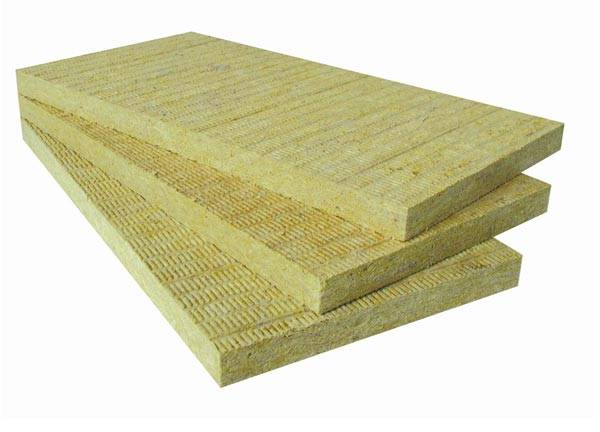
Basalt slab is an excellent material for insulating plastic windows
Now that we know why plastic windows in a private house sweat, it will be much easier to eliminate this nuisance.
Related article:
How to identify the cause of fogging
Most likely, the problem of condensation on the glass occurs at regular intervals. In the morning - in the bedroom, in the evening on the balcony, kitchen or living room. By analyzing the time and frequency of the appearance of drops, you can determine the exact reason for their appearance.
Sweat in the morning
 The phenomenon of dew formation on the grass reflects the formation of drops on the glass in the morning. The district heating system does not provide temperature control. The concentration of warm air at night in the room and the lowest possible outdoor temperatures create a “dew point” and the formation of drops.
The phenomenon of dew formation on the grass reflects the formation of drops on the glass in the morning. The district heating system does not provide temperature control. The concentration of warm air at night in the room and the lowest possible outdoor temperatures create a “dew point” and the formation of drops.
Condensation in only one room
If the windows cry more in one room than in the others, this means that air exchange in this room is impaired or the humidity indicator is increased.
Factors affecting fogging:
- The presence of an aquarium indoors.
- There is a clothes dryer.
- Blackout curtains that keep air out.
- A large number of indoor flowers.
Sweat the windows in the kitchen
The kitchen is a room with high humidity. Therefore, the kitchen is more prone to leaks. If you are faced with such a problem, it is most likely that the cooker hood cannot cope with the amount of steam from the kettle, stove and oven.

